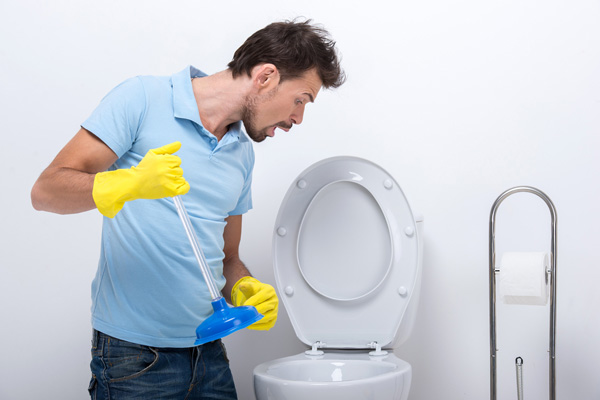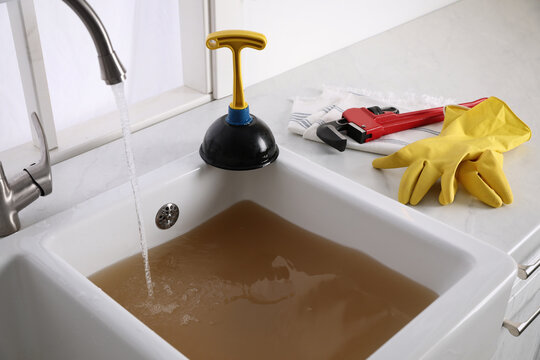Listed here down the page you will find a good deal of awesome content on the subject of How To Use Your Toilet Plunger Correctly in 5 Easy Steps.

Intro
Correct maintenance of household drains pipes is necessary for stopping blockages and making certain smooth water flow. Among the trick devices in every property owner's toolkit is the bettor, along with numerous drainpipe cleansers designed to tackle stubborn clogs efficiently. This article discovers just how to utilize plungers and drainpipe cleaners successfully to keep your drains pipes flowing freely.
Section 1: Understanding Bettors
Types of Plungers
There are a number of types of bettors available, each developed for different types of drains and blocks. The most usual kinds include cup bettors, flange plungers, and accordion bettors.
Exactly How Plungers Work
Bettors service the principle of developing pressure and suction to displace blockages. When properly used over a drain, they develop a vacuum that can take out debris or break up clogs.
Picking the Right Bettor
Selecting the best bettor depends on the kind of drainpipe and the nature of the clog. Cup bettors are perfect for sinks and bathtubs, while flange plungers are better fit for bathrooms as a result of their design.
Common Errors with Plungers
Preventing these blunders guarantees reliable plunging: improper seal around the drainpipe, not enough force, and unclear bordering debris.
Section 2: Utilizing Plungers Properly
Preparation
Before diving, make certain the bettor covers the drain completely and forms a tight seal. Clear any type of noticeable particles around the drainpipe opening.
Strategy
Beginning with gentle diving activities to construct suction. Rise stress slowly, utilizing a steady rhythm. Repeat as necessary till the drainpipe clears.
Troubleshooting Tips
If plunging does not function, attempt adjusting the seal, applying petroleum jelly for a much better seal, or making use of a various kind of bettor.
Area 3: Recognizing Drainpipe Cleaners
Types of Drainpipe Cleansers
Drain cleansers can be chemical or chemical. Chemical cleaners utilize solid chemicals to liquify clogs, while enzymatic cleaners utilize all-natural enzymes to break down raw material.
Just How Drainpipe Cleaning Company Job
Chemical cleaners react with blockages to liquify them, while chemical cleansers break down organic materials like hair and grease without hurting pipes.
Safety Considerations
Always put on handwear covers and eye defense when making use of chemical drainpipe cleaners. Guarantee sufficient ventilation and adhere to supplier directions very carefully.
Eco-Friendly Alternatives
Think about using vinegar and cooking soda or enzyme-based cleaners for eco-friendly choices that are safer for pipelines and the setting.
Section 4: Utilizing Drainpipe Cleaners Effectively
Application Methods
Put chemical cleaners directly right into the drain opening. Enable them to work for the recommended time prior to purging with hot water. Chemical cleaners need to sit over night.
Precautions
Prevent blending various types of cleansers, as this can produce poisonous fumes. Never use chemical cleansers combined with a plunger, as splashing can occur.
Dealing With Stubborn Blockages
For relentless obstructions, take into consideration making use of a pipes serpent or calling a specialist plumber to prevent damages to pipelines.
Final thought
To conclude, understanding how to make use of bettors and drain cleansers successfully is necessary for preserving healthy pipes systems. By selecting the right devices and methods, homeowners can deal with small blockages and stop major pipes concerns down the line.
How To Properly Use A Plumbing Snake To Clear Drains
When any drain clogs in our home arise, we tend to gravitate toward the plunger and little else. In cases where the plunger and its vacuum-created pressure are not able to clear clogs, many immediately move to harmful chemicals or simply call their plumber to fix the issue.
we’re happy to help with all drain cleaning needs and concerns. This includes informing you on a few other home remedies you may have at your disposal for minor to moderate clogs, one of which is the use of a plumbing snake. Many people have never used one of these before – let’s go over the steps to take when your drain clogs and you have a plumbing snake available.
Attempt Plunger Use
The first step here, as we noted above, should indeed be to grab your plunger when you notice a drain clog and attempt to resolve it this way. If you’re unsure how to use a particular type of plunger, our plumbers can answer any questions you have. If this doesn’t do the trick, however, you move on to the snake.
Locate And Prepare Snake
A plumbing snake is a metal or plastic device that’s generally about a quarter of an inch thick. It’s design with significant extensions, meant to reach down into your clogged drain and push the clog out. Snakes also contain drain augers that will latch onto and push stubborn blockages.
If your plunger doesn’t clear a clog, locate your snake and bring it to the drain in question. We also recommend keeping a bucket nearby to collect the clog once you pull it out, plus we’d advise wearing goggles and possibly protective gloves.
Feed Snake
Once you’re ready to go, feed the snake slowly down the drain, using the crank device it comes with to keep it moving until it finds the clog. Once this happens, much of the clog will be latched onto the coil so you can pull it out, while the rest will simply break up and flow downward.
Detach Debris
Remove the snake slowly from the drain, and once you’ve done so, pick off any debris that’s stuck to the coil. This is another area where wearing gloves is a must.
Flush Drain
Finally, take a few minutes to ensure the snake has done its job correctly. If you’ve been using it on a toilet, flush the toilet a couple times and make sure everything flows well. If you’ve used it on a different drain, flush it with some room temperature water.
https://www.mybuddytheplumber.com/blog/how-to-properly-use-a-plumbing-snake-to-clear-drains/

I came across that page on How To Use Your Toilet Plunger Correctly in 5 Easy Steps when scouting around the search engines. Feel free to take a moment to distribute this post if you enjoyed reading it. Kudos for your time. Come back soon.
Book
Comments on “Tips to Master Plungers and Drain Cleaners: Specialist Advice”